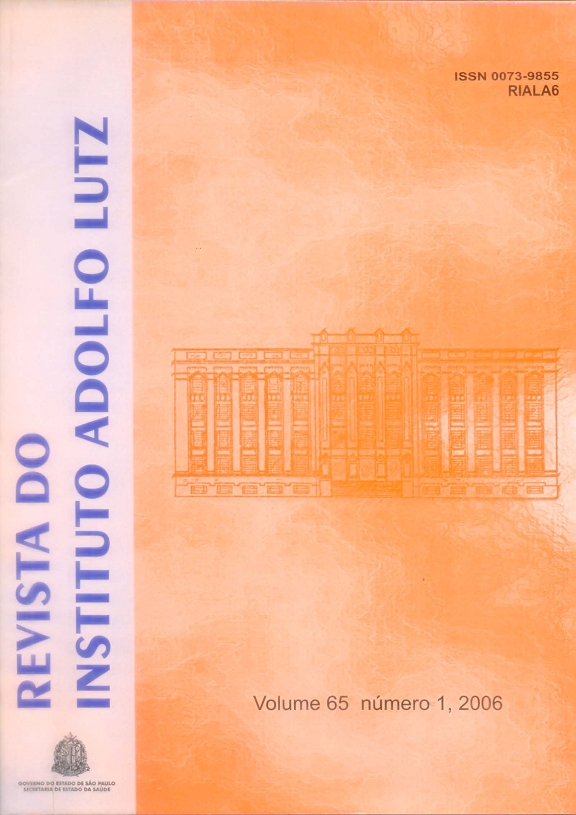Resumo
Os enxaguatórios bucais podem ser utilizados como complemento à higienização bucal. A atividade antimicrobiana de seis produtos comercialmente disponíveis foi avaliada frente a Streptococcus mutans, Enterococcus faecalis, Staphylococcus aureus e Candida albicans. Verificou-se a sobrevivência dos microrganismos após 30, 60 e 90 segundos de contato com os produtos. O tempo de redução decimal (Valor D) e a redução da população microbiana aobtida após os intervalos de contato (log UFC/mL vs tempo) foram utilizados para comparar a atividade antimicrobiana dos produtos avaliados. Os resultados indicaram diferenças na sobrevivência dos microrganismos e o produto composto por óleos essenciais evidenciou a melhor atividade antimicrobiana.
Referências
1. Adams D, Addy M. Mouthrinses. Adv Dent Res 1994; 8: 291-301.
2. Marsh, PD. Microbiological aspects of the chemical control of plaque andgingivitis. J Dent Res 1992; 71: 1431-8.
3. Newman MG, Hulem C, Colgate J, Anselmo C. Antibacterial susceptibilityof plaque bacteria. J Dent Res 1979; 58: 1722-32.
4. Prista LN, Bahia MFG, Vilar E. Dermofarmácia e Cosmética. Porto: Assoc.Nacional de Farmácias; 1995.
5. Steinberg D, Hirschfeld Z, Tayeb I, Ben-Yosef S, David A, Friedman M.The effect of parabens in a mouthwash and incorporated into a sustainedrelease varnish on salivary bacteria. J Dentistry 1999; 27: 101-6.
6. Bonadeo I. Cosmética. Ciência y Tecnologia. Madrid: Ed Ciência, 1988.
7. McDonnell G, Russel D. Antiseptics and disinfectants. Activity, action andresistance. Clin Microbiol Rev 1999; 12: 147-79.
8. Hobson DW; Bolsen K. Methods of testing oral and topical antisepticsand antimicrobial. In: Block SS. Desinfection, Sterilization and Preservation. 5 ed. Philadelphia: Lippincott Williams & Wilkins; 2001. p.1329-59.
9. Nascimento GGF, Locatelli J, Freitas PC, Silva GL. Antibacterial activityof plant extracts and phytochemicals on antibiotic-resistant bacteria. Braz J Microbiol 2000; 31: 247-56.
10. Brasil. Resolução RDC nº 211, de 14 jul. 2005 da Agência Nacional de Vigilância Sanitária. Estabelece a definição e classificação de produtos de higiene pessoal, cosméticos e perfumes. Diário Oficial [da] República Federativa do Brasil, Brasília, DF, 18 jul. 2005. Disponível em http://e-legis.anvisa.gov.br/leisref/public/showAct.php?id=17882&word=. Acessoem 02 ago. 2005.
11. Botelho MG. Fractional innibitory concentration index of combinations of antibacterial agents against cariogenic organisms. J Dentistry 2000; 28565-70.
12. Orth DS. Linear regression method for rapid determination of cosmetic preservative efficacy. J Soc Cosmet Chem 1979; 30: 321-32.
13. Sutton SVW, Porter D. Development of the antimicrobial effectivenes stest as USP chapter <51>. PDA J Pharm Sci Technol 2002; 56: 300-11.
14. [AOAC] Association of Official Analytical Chemists. AOAC OfficialMethod 960.09 – Germicidal and detergent sanitizing action of disinfectants. Official Methods of Analysis of AOAC International. 17thedition. Gaithersburg: AOAC International, 2000.
15. [AFNOR] Association Française de Normalisation. Norme Européenne,Norme Française – NF EN 1040 – Antiseptiques et disinfectants chimiques; Activité bactericide de base – Méthode d ́éssai et prescripitions (phase 1).Paris: Association Française de Normalisation, 1997.
16. Cremieux A; Fleurette J. Methods of testing disinfectants. In: Block SS.Desinfection, Sterilization and Preservation. 4 ed. Philadelphia: Lea &Febiger; 1991. p. 1009-27.
17. Farmacopéia Brasileira. 4 ed. São Paulo: Atheneu Ed; 1988. p. v.5.1.6.-1-5
18. United States Pharmacopeia. 28 ed. Rockville: United States Pharmacopeial Convention; 2005. p. 1809-18.
19. McBain AJ, Bartolo RG, Catrenich CE, Charbonneau D, Ledder RG, Gilbert P. Effects of triclosan-containig rinse on the dynamics and antimicrobial susceptibility of in vitro plaque ecosystems. Antimicrob Agents Chemother2003; 47: 3531-8.
20. Meiller TF, Kelley JI, Jabra-Rizk MA, DePaola LG, Abdullahel Baqui AAM,Falkler WA. In vitro studies of the efficacy of antimicrobials against fungi.Oral Surg Oral Med Oral Pathol Oral Radiol Endod 2001; 91: 663-70.
21. Giuliana G, Pizzo G, Milici ME, Musotto, GC, Giangreco R. In vitroantifungal properties of mouthrinses containing antimicrobial agents. OralSurg Oral Med Oral Pathol Oral radiol Endod 1997; 68(8): 729-33.
22. Giuliana G, Pizzo G, Milici ME, Giangreco R. In vitro activities ofantimicrobial agents against Candida species. Oral Surg Oral Med OralPathol Oral radiol Endod 1999; 87(1): 44-9.
23. Pan PH, Finnegan MB, Sturdivant L, Barnett ML. Compartive antimicrobialactivity of an essential oil and an amine fluoride-stannous fluoridemouthrinse in vitro. J Clin Periodontol 1999; 26(7): 474-6.
24. Riep BG, Bernimoulin JP, Barnett ML. Comparative antiplaque effectiveness of an essential oil and an amine fluorid-stannous fluoridemouthrinse. J Clin Periodontol 1999; 26(3): 164-8.
25. Pitten FA, Kramer A. Antimicrobial efficacy of antiseptic mouthrinsesolutions. Eur J Clin Pharmacol 1999; 55(2): 95-100.
26. Pitten FA, Kramer A. Efficacy of cetylpyridinium chloride used asoropharyngeal antiseptic. Arzneimittelforschung 2001; 51(7) 588-95.
27. Renton-Harper P, Addy M, Moran J, Doherty FM, Newcombe RG. Acomparison of chlorhexidine, cetylpyridinium chloride, triclosan, and C31G mouthrinse products for plaque inhibition. J. Periodontol 1996; 67(5) 486-9.
28. Monfrim RCP, Ribeiro MC. Avaliação in vitro de anti-sépticos orais sobr ea microbiota da saliva. Rev APCD 2000; 54(5) 400-7.

Este trabalho está licenciado sob uma licença Creative Commons Attribution 4.0 International License.
Copyright (c) 2006 Adriana Bugno, Maria Aparecida Nicoletti, Adriana Aparecida Buzzo Almódovar, Tatiana C. Pereira, Mariângela Tirico Auricchio
